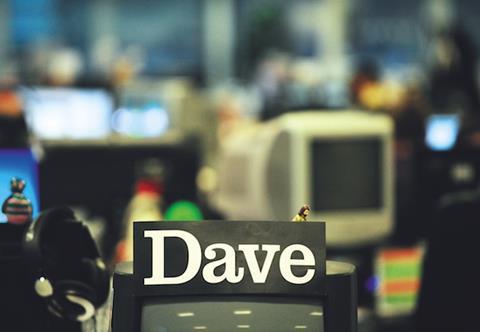
Need to know:
- A one-size-fits-all approach to employee motivation can be successful as long as it includes an element of choice for staff.
- Involving employees and garnering their opinions on a motivation strategy can keep it relevant to the organisation.
- Many parties within an organisation can take a role in helping to motivate staff.
Motivation is essential for the effective recruitment, retention and engagement of talent, but how can employers ensure that their approach is hitting the right target? Is it best to adopt a one-size-fits-all strategy that is delivered to the whole organisation, or provide different employee groups with different offerings?
To segment or offer en masse?
Motivation benefits can include a range of initiatives, such as personalised gift cards or vouchers as a thank you for effort, or team-building days and social events. Jamie Mackenzie, director of marketing at Sodexo Benefits and Rewards Services, says: “Summer months can be a good time to build team morale. Offering outdoor socials and early finishing times can encourage teams to bond in different environments, while positioning a business as a desirable employer to external job seekers.”
Employers can utilise employee data they have to hand to identify which benefits, communication styles and overall strategy would be best suited to their workforce; they need to understand which approach is most appropriate for their employee demographic and organisational aims.
Staff could be segmented according to employees’ job function, gender, salary, or age. In many workplaces, it is not uncommon for employers to have five generations of employees, all of which need to be taken into account when considering segmentation.
However, tailoring motivational incentives for an entire workforce can sometimes be time-consuming and lacklustre when it comes to engagement, says Charles Cotton, performance and reward adviser at the Charted Institute of Personnel and Development (CIPD). Offering an element of choice within a broader strategy can help to combat this.
Jamie Clarke, business development director at ?Edenred UK, says: “The key to a good employee motivation approach has got to be choice, especially if [employers] have a large or really diverse workforce.”
One-size-fits-all strategies work well, as long as staff have the ability to choose benefits that suit them, says Clare Rutherford, new business insight and marketing manager at House of Fraser for Business. “It can be difficult to segment staff for motivational purposes because employers can’t assume someone wants something just because of their age or gender; employees’ situations are so diverse nowadays.”
Employee benefits need to be relevant and accessible in order to have a positive impact on staff; offering motivational perks through a flexible benefits scheme, for example, could help cater to a diverse workforce. Mackenzie says: “Where staff demographics vary widely, employers should consider flexible schemes allowing employees to select the most relevant reward or benefit options, guaranteeing all staff receive something they value and appreciate, encouraging desired behaviours and performance.”
Giving employees choice means staff are provided with an engaging and motivating offering, and also gives an employer the opportunity to gather feedback as to which benefits are the most popular. Without monitoring the take up of workplace benefits, employers are losing out on the chance to further understand employees’ preferences, as well as the opportunity to alter their benefits strategy according to those preferences to generate better engagement in the future. “Organisations must have an idea of what their employees want and need,” says Cotton.
All for one
An effective motivational strategy results from a good level of interaction between different parties within an organisation. While a line manager and a team of colleagues may have a more direct impact on an employee’s motivation, the method and approach may be communicated through the benefits team, but may have been initiated by, and cascaded down from the executive board. “Employers have to have a [motivation] strategy that is mostly impacted by line managers who know staff really well,” says Edenred’s Clarke. “That way, they can engage with what staff are doing and what they would like to be improved. Employee motivation has got to work from the top down though.”
Collaboration between multiple departments can help ingrain the strategy in an organisation's culture and ensure it brings about the intended consequences. “HR teams are often considered to be in charge of designing and implementing rewards and benefits that drive employee motivation,” says Mackenzie. “However, in order for these to be truly successful it is crucial that senior management is fully onboard and ultimately responsible for overseeing the implementation of such initiatives. Senior-level engagement is also imperative to ensure that the motivation strategies reflect the wider ethos of the [organisation] and, in turn, the goals of the business.”
Employers are ultimately responsible for implementing and managing motivational strategies and environments, but they can look to outside influences. “The [motivation] process involves a combination of input from employers, consultative capabilities, tools and advice from third-party providers, and interest and response from staff to generate buy-in and the intended results,” says Mackenzie.
It can be beneficial for organisations to research what providers, as well as their potential competitors, are offering, in order to gauge how best to meet employees’ expectations and needs.
Effective communication
Employers need to thoroughly communicate with their employees to ensure that they know what motivational benefits are available to them. Cotton says: “Good employee motivation relies on education and communication from employers to make sure staff understand what their options are and what they’re being offered.”
Employers should take the time to understand their employees and reflect this in the benefits they offer, taking their individual preferences into account. It is down to organisations to uncover what competitors, and motivational benefit providers are offering, and build a motivational strategy for their employees from that. Yet staff also have a responsibility to supply their employer with honest feedback concerning the motivational benefits and perks they are offered, so that their employer can improve on their offering, and better motivate, engage and retain them.

Asda moves to segment motivation
Retail-chain Asda currently has a one-size-fits-all motivation strategy for its 175,000 employees, but it is hoping to offer more diverse options in the future.
It uses its annual employee engagement survey, Your Voice, to find out more about what its employees want and need in terms of benefits and motivation. In 2015, 143,648 of its employees took part in the survey and Asda segmented the data it collected in terms of factors such as employee grade, age and location.
The retailer also randomly selects 10% of its workforce each quarter to take part in a pulse survey to ensure that the staff motivation data it has is as up to date as possible.
In 2013, Asda conducted focus groups to find out what really mattered to its staff. It used this feedback to develop its colleague pledges of respect, fairness at work, opportunities and having pride in the organisation.
Carl Tabisz, senior manager, leadership and engagement at Asda, says: “We have so many different people working at Asda, different age groups, levels of experience and jobs, so we need to use what we know about them to have a better-informed motivation strategy.”

UKTV works together to motivate employees
Television broadcaster UKTV operates according to its philosophy of working together to create a better organisation and in line with its set of values: create, learn, influence, challenge and collaborate.
Keeping its 279 employees highly engaged has been vital to the organisation’s success, and its incentive and recognition schemes have helped it to achieve this.
One of its most popular initiatives is awarding staff with chocolate bars containing an instant reward such as a lie-in, early finish or duvet day.
In 2016, UKTV introduced a new initiative that gives all employees an additional day of annual leave on their birthday.
Claire Astley, HR director at UKTV, says: “While we have one clear strategy, we offer a range of things that will incentivise everyone. People are motivated by different things, so you need to make sure that with a range of motivational benefits there is something for everyone.
“We have built a creative, collaborative and, above all, fun working environment that inspires entrepreneurial and innovative thinking, and motivates people to do their best. Our unprecedented growth as a business in recent years shows everyone here is doing exactly that.”
For instance, any employee who becomes a new people manager at UKTV is enrolled onto its Management Academy programme. A key part of the training is around how to motivate staff to make sure everyone in the business can reach their full potential, and to ensure managers have the skills they need to feel confident in their role.
UKTV also believes in generating ideas for all areas of the business to improve the organisation. Astley says: “Generating ideas is one of our core behaviours, so when we see it, we reward it.”
To do this, UKTV hosts its annual internal awards, which celebrates individual and team successes across the network. Staff can nominate their colleagues in categories such as Inspirational manager, Unsung hero and Team of the year, and winners are announced at a ceremony attended by all staff.
Employees can also be nominated for a Create, Learn, Influence, Challenge and Collaborate (CLICC) award by their peers throughout the year, with winners receiving a pre-loaded voucher.
Almost all (95%) of UKTV’s staff believe they can make a valuable contribution to the success of the organisation and 86% feel proud to work for the organisation.
The organisation has also gained external recognition for its efforts; it has been named in the Sunday Times’ Top 100 Best Companies to Work For 2016 list, where it has been commended for its appealing working environment and clear set of values.












